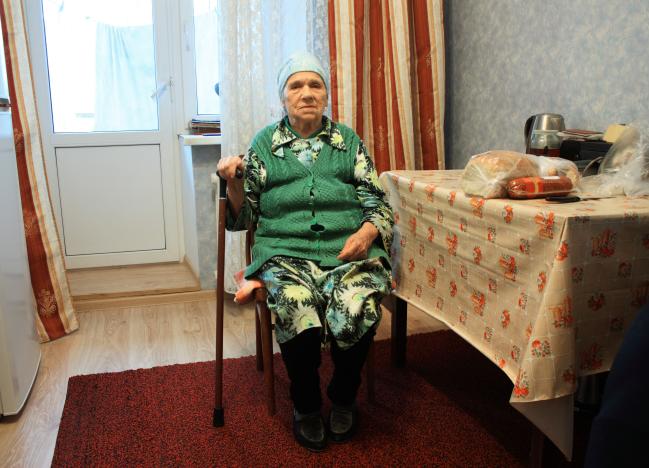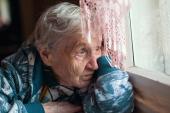Psychosocial Risk Affects AVR Recovery, Merits Heart Team Consideration
The impact on outcomes, including increased short-term mortality, was greater after SAVR than after TAVI.

Individual psychosocial risk factors impact short-term outcomes after AVR—either TAVI or SAVR, according to a new study. The findings suggest that in some patients, TAVI may set them up for a more-successful recovery than will surgery.
Approximately 40% of patients in the study who underwent SAVR or TAVI had at least one psychosocial risk factor—the most common being low socioeconomic status and psychiatric disease. Having one or more psychosocial risk factors, which may be markers of inadequate social support, was associated with poorer outcomes in both SAVR and TAVI patients, but more of an adverse impact in terms of mortality and readmissions was seen in the surgery group at 30 days.
“I think this brings up a very interesting point in terms of the heart team discussion, because we don't really think about this,” he told TCTMD. “At the same time, it's very hard to tease out why we saw this result. Is it just lack of support? Is more support necessary for these patients following a procedure? One thing that we do know is that these psychosocial risk factors affect outcomes after surgery more so than catheter-based therapies, so the argument here is that if they have psychosocial risk factors, should we be thinking more about less-invasive options if they have anatomically suitable candidacy?”
In an accompanying editorial, Jaya Chandrasekhar, MBBS, MS, PhD (Eastern Health, Melbourne, Australia), says the findings challenge the idea that psychosocial issues and socioeconomic considerations are trivial in comparison to anatomy and clinical comorbidity.
For surgeons without TAVI programs who may not have adopted the heart team approach, this reinforces the need for systematic meetings, Chandrasekhar writes, “and for all of us involved in AVR to ensure a comprehensive multidisciplinary focus and check off on psychiatric issues, where relevant, and provision of social work support for the best possible postoperative recovery.”
Impact of Nontraditional Risk Factors
Kaneko and colleagues led by Paige Newell, MD (Brigham and Women’s Hospital, Boston, MA), used the Nationwide Readmissions Database to examine outcomes for 74,763 SAVR and 87,142 TAVI patients treated between 2016 and 2018.
Low socioeconomic status was the most common psychosocial risk factor and was seen in nearly 25% of SAVR patients and 20% of TAVI patients, followed by psychiatric disease in 18% and 13%, respectively. The mean age was 64.3 years in SAVR patients with these risk factors and 78.4 years in the TAVI group.
Compared with patients with no psychosocial risk factors, the 45% of patients in the SAVR group and 36.4% in the TAVI group who had at least one were younger, more often female, and more likely to have had a nonelective admission. Comorbidities were similar between patients who did or did not have one ore more psychosocial risk factor.
At 30 days, mortality was higher in the SAVR patients with versus without psychosocial risk factors (4.2% vs 3.7%; P = 0.048), as was readmission (13.1% vs 11.3%; P < 0.001). Those with psychosocial risk factors also had longer hospital stays and were more often discharged to a skilled nursing facility.
In the TAVI population, there was no difference in mortality rates at 30 days based on the presence of psychosocial risk factors, but those with risk factors had a higher rate of 30-day readmission (11.7% vs 10.7%; P = 0.012) and were more likely to be discharged to a skilled nursing facility (12.5% vs 8.5%; P < 0.001). The difference in readmissions also was seen at 90 and 180 days. The most-common reasons for readmission were circulatory, respiratory, or digestive issues; and infections.
Multivariable analysis confirmed higher risk for 30-day readmission (OR 1.10; 95% CI 1.02-1.19) and discharge to a skilled nursing facility (OR 1.21; 95% CI 1.14-1.31) in SAVR patients with at least one psychosocial risk factor compared with none. However, there was no significant impact of risk factors on adjusted mortality at 30, 90, or 180 days.
For TAVI patients, however, multivariable analysis showed no impact of psychosocial risk factors on 30-day mortality, readmission, or composite morbidity (stroke, pulmonary embolism, pacemaker implantation, bleeding complications including acute hemorrhage or coagulopathy, acute kidney injury, MI, or new atrial fibrillation). TAVI patients with at least one psychosocial risk factor did, however, have an increased risk of discharge to a skilled nursing facility compared with those with no psychosocial risk factors.
Kaneko said that while the results are hypothesis-generating and don’t include the longer-term follow-up needed to clarify numerous aspects of this issue, they support the importance of psychosocial risk factors and asking patients about them ahead of planned AVR.
“We certainly think that this is one of the critical aspects that we will need to look at for the future of treating these patients individually rather than categorizing them into just one bucket of aortic stenosis patients,” he added.
L.A. McKeown is a Senior Medical Journalist for TCTMD, the Section Editor of CV Team Forum, and Senior Medical…
Read Full BioSources
Newell P, Zogg C, Shirley H, et al. The effect of psychosocial risk factors on outcomes after aortic valve replacement. J Am Coll Cardiol Intv. 2022;15:2326-2335.
Chandrasekhar J. Psychosocial fitness for aortic valve replacement: can anxiety, depression, and postcode influence the outcomes? J Am Coll Cardiol Intv. 2022;15:2336-2338.
Disclosures
- Newell and Chandrasekhar report no relevant conflicts of interest.
- Kaneko reports consulting for Edwards Lifesciences, Medtronic, 4C Medical, Abbott, and Baylis.





Comments